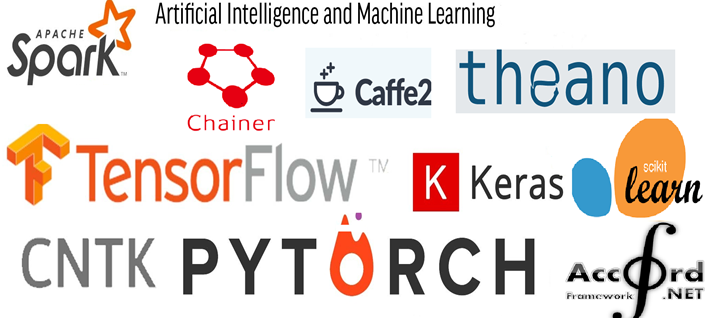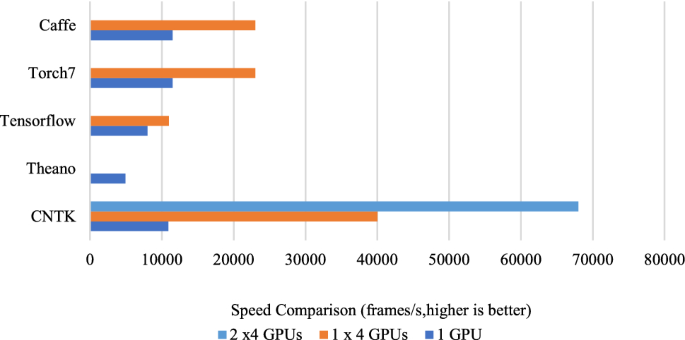
There are many benefits to unsupervised learning in comparison to supervised. This technique is much faster than supervised and far less costly than supervised. Let's take a look at the key differences between these two methods. Unsupervised learning is also faster and more precise. False positives can be dangerous. These are just a few of the possible downsides to supervised training. Consider all the benefits and choose which one you think is most appropriate for your application.
Unsupervised learning refers to machine learning.
Unsupervised learning algorithms use an established set of rules to establish association between objects. These rules can be used to create suggestions for users and curate ad inventory for specific audiences. As one of the cornerstone algorithms of unsupervised machine learning, association rules are especially useful for the purposes of finding correlations between objects and can be best explained through eCommerce-related examples.

It is quicker
Unsupervised learning is usually faster than supervised. Unsupervised learning is simpler and doesn't require labeling input data. Unsupervised learning is also real-time and allows the learner to better understand the learning model. Unsupervised learning doesn't use pre-labeled input information, which makes it easier to access unlabeled data on a computer. Unsupervised learning comes with its drawbacks.
It is easier
You may have had to use labeled data to train an algorithm. While supervised learning depends on a teacher, a data set with known answers and unsupervised learning doesn't have one. Unsupervised learning is slower and more complex, but it's useful for data mining as well as uncovering hidden knowledge or trends. Unlabelled data can be used to train your algorithm before assigning it a classifier.
It is cheaper
Unsupervised learning costs less than supervised. It can be used in solving problems such regression and classification. In this method, the input data is not labeled. The goal of this method is to find the underlying structure within the dataset and group the data according to similarity. The result of this technique is a compressed dataset. Unsupervised learning is more cost-effective than supervised learning.

It is best to have human oversight
The idea that unsupervised learning could improve business processes is a strong one. While supervised learning requires human oversight, unsupervised learning models do not require it. These machines can determine the data structure without human supervision and can be used to create better cross-selling strategies. Unsupervised recommendation engines can, for instance, identify customers and suggest related products during checkout. It can also identify the customer's characteristics and suggest similar products.
FAQ
Are there any potential risks with AI?
You can be sure. There always will be. Some experts believe that AI poses significant threats to society as a whole. Others argue that AI is necessary and beneficial to improve the quality life.
AI's potential misuse is the biggest concern. Artificial intelligence can become too powerful and lead to dangerous results. This includes autonomous weapons, robot overlords, and other AI-powered devices.
AI could take over jobs. Many people fear that robots will take over the workforce. However, others believe that artificial Intelligence could help workers focus on other aspects.
For instance, economists have predicted that automation could increase productivity as well as reduce unemployment.
Which AI technology do you believe will impact your job?
AI will take out certain jobs. This includes jobs such as truck drivers, taxi drivers, cashiers, fast food workers, and even factory workers.
AI will bring new jobs. This includes positions such as data scientists, project managers and product designers, as well as marketing specialists.
AI will make current jobs easier. This applies to accountants, lawyers and doctors as well as teachers, nurses, engineers, and teachers.
AI will make existing jobs more efficient. This includes agents and sales reps, as well customer support representatives and call center agents.
What can AI do?
AI can be used for two main purposes:
* Prediction-AI systems can forecast future events. A self-driving vehicle can, for example, use AI to spot traffic lights and then stop at them.
* Decision making - Artificial intelligence systems can take decisions for us. Your phone can recognise faces and suggest friends to call.
What's the status of the AI Industry?
The AI industry continues to grow at an unimaginable rate. There will be 50 billion internet-connected devices by 2020, it is estimated. This means that all of us will have access to AI technology via our smartphones, tablets, laptops, and laptops.
Businesses will need to change to keep their competitive edge. They risk losing customers to businesses that adapt.
You need to ask yourself, what business model would you use in order to capitalize on these opportunities? What if people uploaded their data to a platform and were able to connect with other users? Perhaps you could offer services like voice recognition and image recognition.
Whatever you decide to do in life, you should think carefully about how it could affect your competitive position. You won't always win, but if you play your cards right and keep innovating, you may win big time!
How does AI work
An algorithm is a set or instructions that tells the computer how to solve a particular problem. An algorithm can be described in a series of steps. Each step has a condition that determines when it should execute. A computer executes each instruction sequentially until all conditions are met. This continues until the final results are achieved.
Let's take, for example, the square root of 5. If you wanted to find the square root of 5, you could write down every number from 1 through 10. Then calculate the square root and take the average. It's not practical. Instead, write the following formula.
sqrt(x) x^0.5
This says to square the input, divide it by 2, then multiply by 0.5.
This is how a computer works. It takes your input, squares and multiplies by 2 to get 0.5. Finally, it outputs the answer.
Is Alexa an Ai?
Yes. But not quite yet.
Amazon's Alexa voice service is cloud-based. It allows users use their voice to interact directly with devices.
First, the Echo smart speaker released Alexa technology. Other companies have since created their own versions with similar technology.
Some of these include Google Home, Apple's Siri, and Microsoft's Cortana.
What are some examples AI apps?
AI is being used in many different areas, such as finance, healthcare management, manufacturing and transportation. These are just a handful of examples.
-
Finance - AI can already detect fraud in banks. AI can scan millions upon millions of transactions per day to flag suspicious activity.
-
Healthcare - AI can be used to spot cancerous cells and diagnose diseases.
-
Manufacturing - AI is used to increase efficiency in factories and reduce costs.
-
Transportation - Self Driving Cars have been successfully demonstrated in California. They are now being trialed across the world.
-
Utilities use AI to monitor patterns of power consumption.
-
Education - AI is being used for educational purposes. Students can interact with robots by using their smartphones.
-
Government - AI can be used within government to track terrorists, criminals, or missing people.
-
Law Enforcement-Ai is being used to assist police investigations. Search databases that contain thousands of hours worth of CCTV footage can be searched by detectives.
-
Defense - AI can be used offensively or defensively. An AI system can be used to hack into enemy systems. In defense, AI systems can be used to defend military bases from cyberattacks.
Statistics
- According to the company's website, more than 800 financial firms use AlphaSense, including some Fortune 500 corporations. (builtin.com)
- Additionally, keeping in mind the current crisis, the AI is designed in a manner where it reduces the carbon footprint by 20-40%. (analyticsinsight.net)
- The company's AI team trained an image recognition model to 85 percent accuracy using billions of public Instagram photos tagged with hashtags. (builtin.com)
- That's as many of us that have been in that AI space would say, it's about 70 or 80 percent of the work. (finra.org)
- More than 70 percent of users claim they book trips on their phones, review travel tips, and research local landmarks and restaurants. (builtin.com)
External Links
How To
How to setup Alexa to talk when charging
Alexa, Amazon’s virtual assistant is capable of answering questions, providing information, playing music, controlling smart-home devices and many other functions. It can even speak to you at night without you ever needing to take out your phone.
Alexa can answer any question you may have. Just say "Alexa", followed up by a question. Alexa will respond instantly with clear, understandable spoken answers. Alexa will continue to learn and get smarter over time. This means that you can ask Alexa new questions every time and get different answers.
You can also control other connected devices like lights, thermostats, locks, cameras, and more.
Alexa can also be used to control the temperature, turn off lights, adjust the temperature and order pizza.
Set up Alexa to talk while charging
-
Step 1. Step 1. Turn on Alexa device.
-
Open Alexa App. Tap Settings.
-
Tap Advanced settings.
-
Select Speech Recognition
-
Select Yes, always listen.
-
Select Yes, only the wake word
-
Select Yes, and use a microphone.
-
Select No, do not use a mic.
-
Step 2. Set Up Your Voice Profile.
-
Select a name and describe what you want to say about your voice.
-
Step 3. Test Your Setup.
After saying "Alexa", follow it up with a command.
Ex: Alexa, good morning!
Alexa will reply if she understands what you are asking. For example, John Smith would say "Good Morning!"
Alexa will not respond to your request if you don't understand it.
After making these changes, restart the device if needed.
Notice: If the speech recognition language is changed, the device may need to be restarted again.